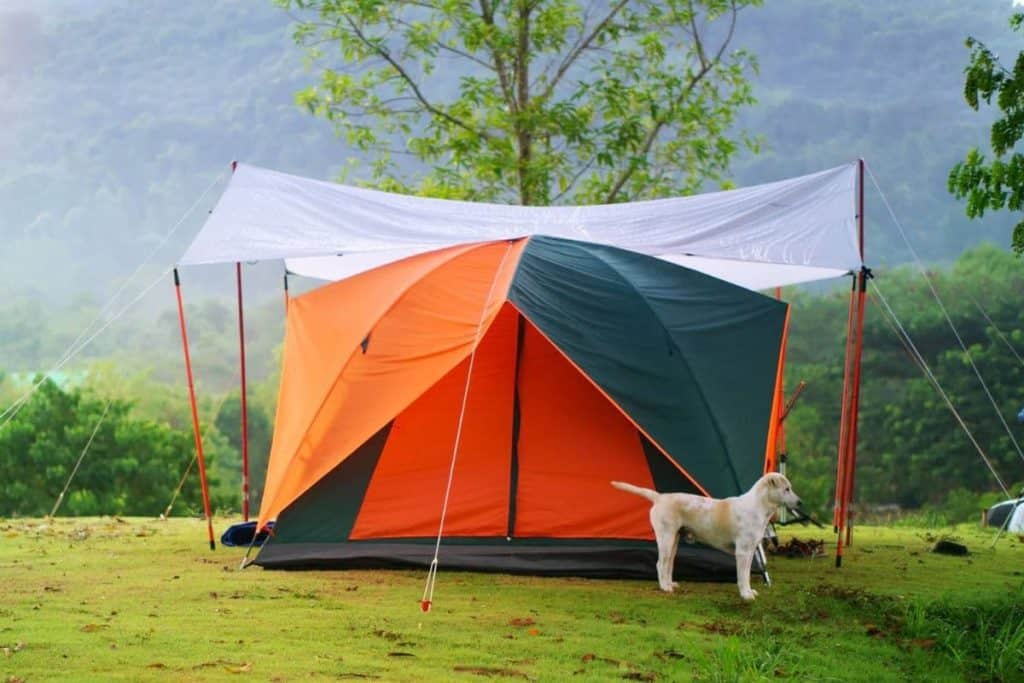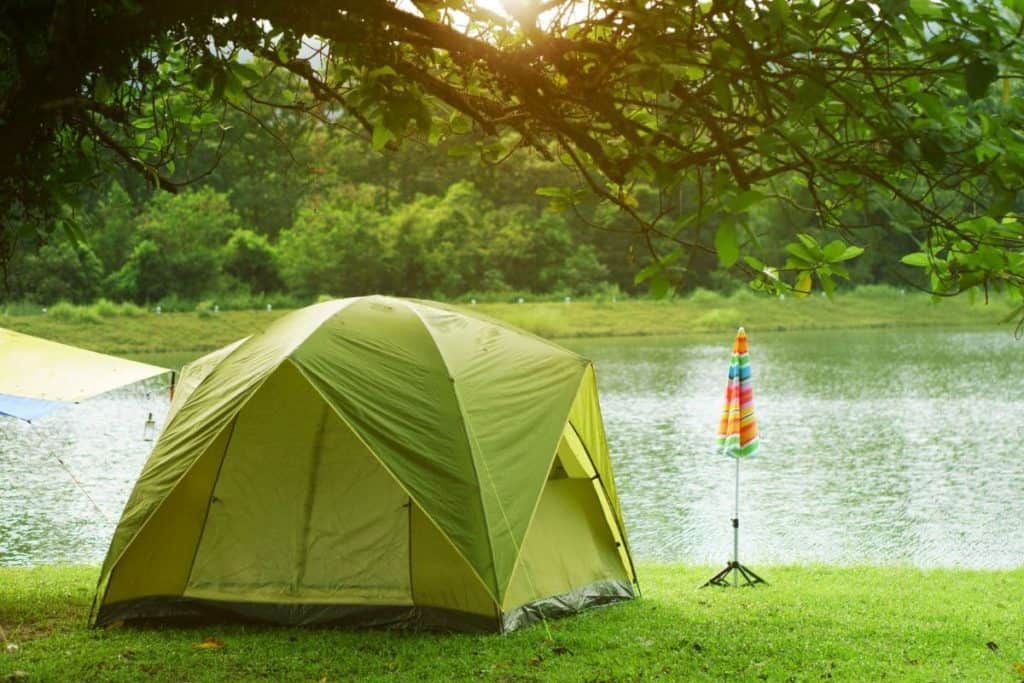Are you planning on going camping and wondering if a tarp under your tent is actually necessary? To make camping an enjoyable experience, you must be prepared for every situation so you can navigate them quickly and efficiently. So, is a tarp necessary to put under your tent?
You should put a tarp under your tent, as it protects against small objects, insects, and the ground itself, which can damage the tent’s fabric. A tarp prevents water from soaking the bottom of the tent, but if installed improperly, it can collect water underneath the tent when it’s raining.
In this article, I’ll discuss why you should invest in a good-quality tarp for your camping trips, how to choose the perfect one, and how to install the tarp to avoid a soaked tent when it’s raining.

Why You Should Put a Tarp Under Your Tent
You should put a tarp under your tent if you want to avoid the fabric of the tent tearing or if you don’t want to sleep on a wet surface during your camping trips. Therefore, it’s beneficial in many ways, but especially against:
- Water
- Insects
- The rough ground
I’ll go over these benefits more in the following paragraphs.
Many Tarps Are Waterproof
No tents are completely waterproof; most are made from nylon, polyester, and/or cotton. These fabrics will keep water outside the tent or absorb it into the fabric, as with cotton tents, but not when it’s completely submerged in water.
This means that normal rainy weather is not really an issue because the material is dense enough to keep the water out of the tent. However, that’s not the case when the tent is sitting in water on very wet ground. The water will seep into the tent and soak everything in it. That’s where a tarp comes in handy.
Tarps can be made from different materials: cotton, polyester, nylon, and canvas. The most waterproof material a tarp can consist of is polyethylene, a dense polymer.
Planning to go overlanding with a tent? Don’t miss my in-depth guide on fixing a leaking tent when raining. You’ll learn how to waterproof your tent and why you should do it.
Tarps Protect You From Insects
Some insects will attempt to eat through plastic, like certain caterpillars and ants. This will leave holes at the bottom of your tent, allowing water, dirt, and other insects to enter and mess up the inside of your tent.
This is possible when the fabric insects decide to attack is thin enough for them to do so, and tarps are thicker and denser than tent fabric, which still allows for air circulation.
Tarps Work as a Shield Against Rough Terrain
If you install your tent on stone ground, this can result in the tearing of the fabric caused by friction. The same can happen if you choose a spot with a soft underground, like grass, with branches, rocks, and other hard or sharp materials spread around. This will also cause tearing and eventually holes through which water and insects can get into the tent.
Because of the thicker fabric, a tarp will form a “shield” between the rough ground and your tent, decreasing the chance of damage. It’s more difficult to penetrate and tear holes into the material, and it’s more durable, thus harder to tear after friction.
There’s an easy way around all of these issues, which includes investing in a roof top tent. This type of tent is ideal if you want to stay off the ground when camping. You wouldn’t have to deal with any of the substances and objects that could possibly damage your tent or cause any inconvenience. It’s a bit of an investment, but it’s worth it for those who go camping regularly.
You can find an extensive list on the Roof Tent Insider website if you want to learn more about the advantages of a rooftop tent. All the aspects in which the rooftop tent excels and triumphs over the regular ground tents are discussed thoroughly in the article.
How To Install a Tarp Under Your Tent
It’s essential that you install a tarp under your tent correctly if you don’t want it to collect water when it’s pouring rain (and in turn, completely soak your tent and all your belongings). The best way to go about this is by folding all the sides of the tarp underneath the tent so rain can’t seep inside of it.

You can keep the tarp in place by weighing the corners down inside your tent with heavier belongings, as long as they won’t be in the way when you’re trying to sleep.
There are also specific weights available for camping, like the ABC CANOPY Canopy Weights (available on Amazon.com). You can buy these sandbags in a pack of four, with a capacity of 28 pounds (12.7 kilograms) per piece. The sand isn’t included, but you can fill them with anything you want that will weigh your tarp down.
What Type of Tarp Is the Best To Put Under Your Tent?
Tarps are generally cheap, which is great if you don’t want to spend too much money just to waterproof the bottom of your tent.
On top of that, you can use a tarp for other purposes when you’re not out camping, including to cover things in your garden during the winter or to protect your bikes and other vehicles from the rain or the cold, which could otherwise cause expensive damage.
The best type of tarp to put under your tent while camping is one that’s waterproof and should be made from polyethylene.
You can find several high-quality tarps for a cheap price, like the B-Air Grizzly Tarp (available on Amazon.com). This polyethylene tarp is waterproof and can be used as shelter during rough weather. The blue version is available in 10 sizes, with a thickness of five millimeters (0.2 in), and the gray version, with a thickness of 10 millimeters (0.39 in), is available in 5 sizes.
Final Thoughts
A tarp under your tent is essential for ground tents to deal with the elements of nature, like rain, rocks, and insects that can be a nuisance on the ground and might even damage your tent. And, therefore, ruin your entire camping trip.
You can use the tarp for other purposes when you’re not out camping. Tarps are especially useful when the weather isn’t too great to protect things from the cold, ice, and rain.
You can install the tarp by folding the sides underneath the tent and weighing them down with specific weights or your camping belongings.
